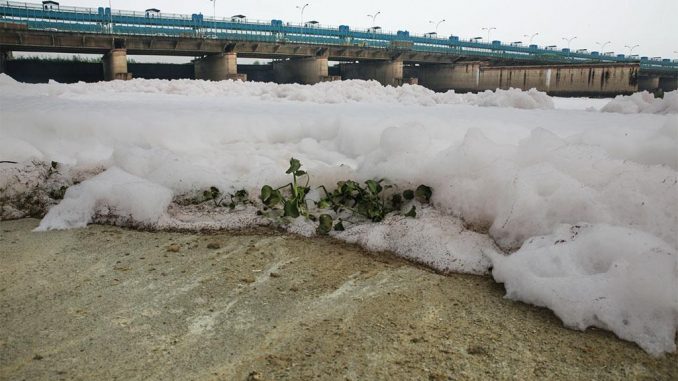
In News
The Central Water Commission (CWC) has released a survey report on heavy metal pollution in Indian rivers. This is the third such survey conducted by CWC.
In-Detail
- The survey was conducted for the period between May 2014 to April 2018.
- As per the survey, almost all major rivers across the country have one or more heavy metals in excess than the prescribed limit of the Bureau of Indian Standards (BIS).
- Samples from two-thirds of water monitoring stations across major rivers contained one or more heavy metal contaminants.
- Only one-third of the samples from water quality stations were found to be safe.
- Of the 442 samples, 287 i.e., 65% of the samples are polluted by heavy metals.
- Samples from 101 stations had two metal contaminations and 6 stations had three metal contamination.
- The most common contaminant in 156 sampled sites was iron with levels above safe limits.
- Interestingly, none of the sites registered arsenic contamination in excess of the prescribed safe limits.
- Contamination from heavy metals like copper, nickel, cadmium, lead and chromium was also found in some samples.
- The study was conducted in 67 rivers across 20 river basins.
- While lead, cadmium, chromium, nickel and copper contamination was more common during the non-monsoon period, iron, lead, chromium and copper exceeded tolerance levels during the monsoon period.
- The study found that zinc and arsenic levels were always within the prescribed limits throughout the survey period and in all samples.
Contamination and Diseases
- The presence of heavy metals is unavoidable in drinking water.
- Trace amounts of these metals in water are beneficial for health. But, when present above safe limits, it leads to a range of diseases.
- Heavy exposure to these metals may lead to physical, muscular, and neurodegenerative diseases like Parkinson’s, Alzheimer’s, muscular dystrophy and multiple sclerosis.
- Common heavy metal contaminants are lead, cadmium, arsenic, iron, mercury, chromium, nickel, zinc, antimony and copper.
Other Findings
- The samples of the rivers are not equally taken. While in some rivers, the samples were taken at only a single site, in major rivers like the Ganga, the Yamuna and the Godavari, samples were taken at various sites.
- Seasonal variation in contamination levels was clearly identified in the survey.
- The samples were collected during pre-monsoon, monsoon and post-monsoon periods.
Sources of Heavy Metal Contamination
- The major sources of heavy metal contamination are mining, milling, plating and surface finishing industries that release a lot of heavy metal contaminants into the environment.

Leave a Reply
You must be logged in to post a comment.